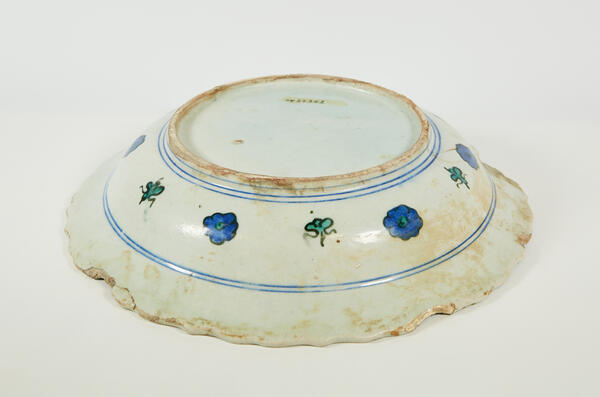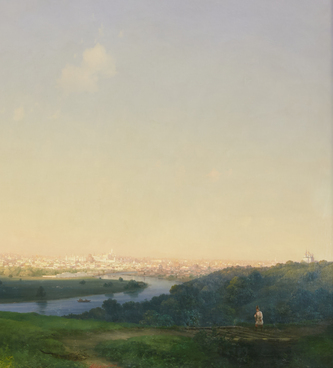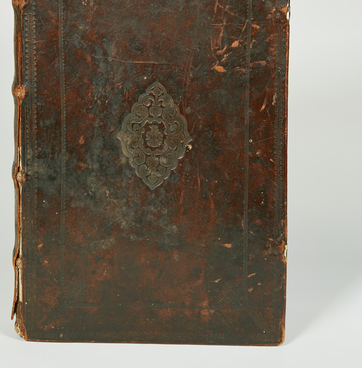This painted majolica dish entered the collection of the Museum of Moscow in 1986. It is indicated in the Accession Register that the dish originated from the façade of the Holy Trinity Church in Khoroshyovo, on the Karamyshev Embankment. This church was built at the turn of the 17th century by order of the Russian Tsar Boris Godunov and decorated with 27 polychrome Oriental dishes embedded in special round cavities on the façade. Such a design was in line with the tradition of decorating churches on Mount Athos in Greece. Сontemporary research suggests that the dishes may have been presented to the court of Boris Godunov by Turkish or Athonite ambassadors.
On the front surface of the dish with a dark blue edge, there is a symmetrical composition with a blossoming red rose in the center surrounded by four radiating dark blue petals against a turquoise background. Both the petals and the background are covered with a scaly pattern made up of black semicircles. The artist decorated this dish, using a typical majolica color palette, with such colors as white, blue, turquoise, red, and black. The paints were applied to the dish’s front and back surfaces.
For decades, the technique of polychrome overglaze painting was kept secret by craftsmen from the Turkish town of Iznik which lies at the eastern end of Lake İznik, located 65 km from Istanbul. Ceramic production was established there not later than the last quarter of the 15th century, during the time of the fastest growth and prosperity of the Ottoman Empire, its rapid territorial expansion, and the increasing wealth of its elite. This craft was distinguished by the appearance and development of miniature painting on pottery which helped create large panels and narrative images and decorate numerous mosques and palaces.



